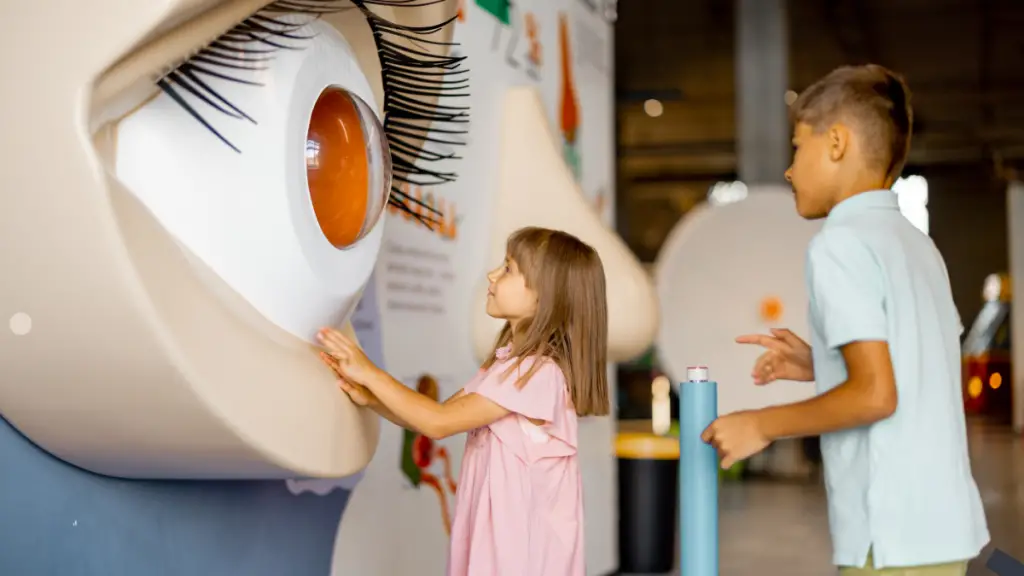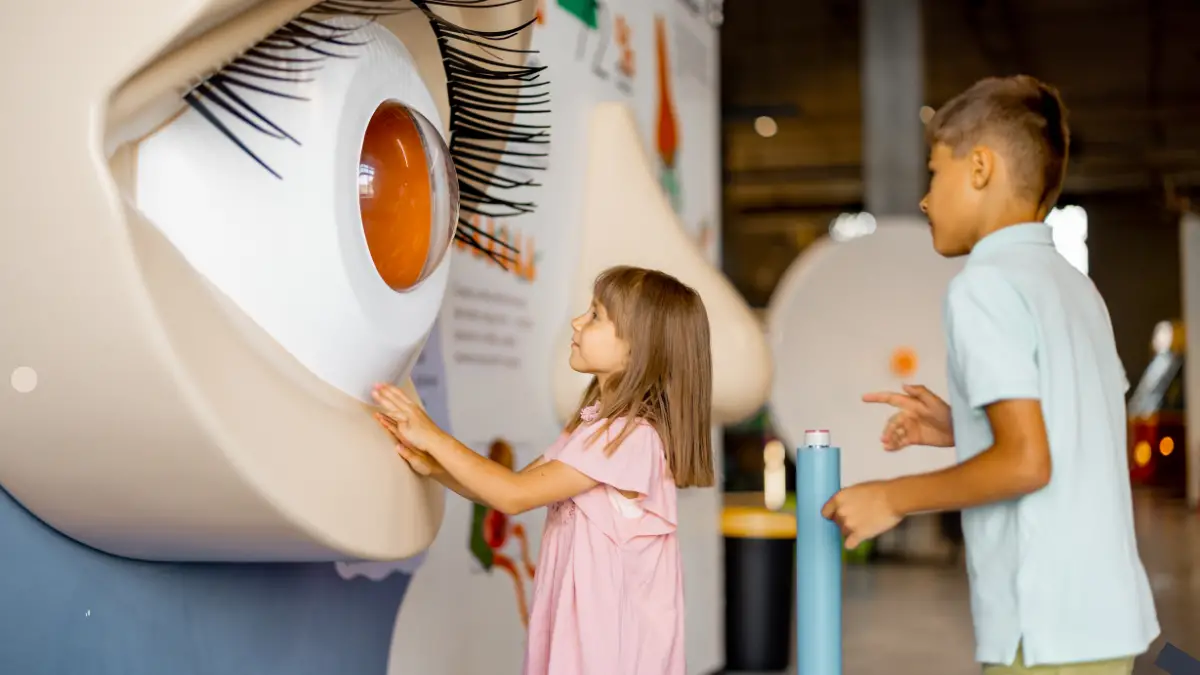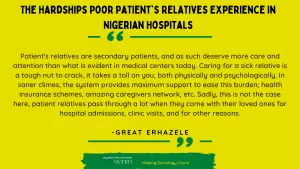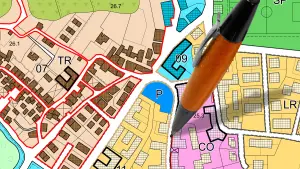In Northern Nigeria, a region rich in cultural diversity and tradition, the concept of children’s museums provides enormous opportunities and hope. A region with the highest population of children in Sub-Saharan Africa certainly deserves to benefit from this innovation that promotes holistic child development. The essay will explore the rich potential of children’s museum in Northern Nigeria.
Coupled with the multifaceted benefits therein. By looking at the educational, cultural, and community-oriented dimensions, we predict an innovative climate where children’s museums will serve as catalysts for positive change.
What is a Children’s Museum?
Children’s Museum.Org defines it as a nonprofit educational and cultural institution committed to serving the needs and interests of children by providing exhibits and programs that stimulate curiosity and motivate learning.
Children’s Museum is specifically designed to provide children with interactive and hands-on learning experiences.
These museums focus on making education fun and engaging, often featuring exhibits and activities that encourage children to explore, experiment, and discover.
The goal of a children’s museum is to stimulate curiosity and creativity, promote learning through play, and support the development of various skills such as critical thinking, problem-solving, and social interaction. Exhibits are typically designed to be safe and accessible for children of various ages, often including themes like science, art, history, and culture.

Characteristics of Children’s Museum
One will wonder why Children’s museums are called museums and not playgrounds or other terms associated with children. The answer can be found in the major characteristics that distinguish children’s museums from traditional museums as we know them.
Children’s Museum exhibits the following features:
1. Interactive Exhibits: Unlike traditional museums where objects are often behind glass, children’s museums feature hands-on exhibits where children can touch, manipulate, and experiment with different elements.
For example, the museum might include water play areas, construction zones with building blocks, or interactive science displays where kids can conduct simple experiments.
2. Educational Focus: Children’s museums aim to educate through play. Exhibits are designed based on educational principles that align with child development theories, ensuring they are age-appropriate and cater to various learning styles.
They cover a broad range of topics such as science, technology, engineering, arts, math (STEAM), history, and cultural diversity.
3. Developmental Benefits: Children’s museums support multiple aspects of child development. Through play and exploration, children develop cognitive skills (like critical thinking and problem-solving), fine and gross motor skills, social skills (by interacting with other children), and emotional skills (such as confidence and independence).
4. Family Engagement: Children’s museums often encourage family involvement. Activities and exhibits are designed to be enjoyable for both children and adults, promoting family bonding and collaborative learning. Many museums also offer family-oriented programs and workshops.
5. Community and Inclusivity: Children’s museums often serve as community hubs that provide inclusive environments where children of all backgrounds and abilities can learn and play. They may offer programs tailored to children with special needs and host events that celebrate different cultures and communities.
6. Temporary Exhibits and Programs: To keep the experience fresh and engaging, children’s museums frequently update their exhibits and host temporary displays or special programs. These can include traveling exhibits, seasonal activities, educational workshops, and themed events that provide new learning opportunities and experiences.
Examples of Notable Children’s Museums
1. Children’s Museum of Indianapolis (USA)
This is the largest children’s museum in the world, offering over 120,000 artifacts. It includes a dinosaur exhibit, a space exploration area, and a science center.
Children’s Museum of Indianapolis offers interactive exhibits, educational programs, and workshops tailored to various age groups.
2. Boston Children’s Museum (USA)
This is known for its hands-on exhibits focused on science, culture, environmental awareness, health and fitness, and the arts.
The museum hosts educational programs, family activities, and special events to promote learning through play.
3. Eureka! The National Children’s Museum (Halifax, UK)
Eureka focuses on learning through play with interactive exhibits about how the body works, how things are made, and how to be environmentally friendly.
The museum provides educational sessions, themed events, and family workshops.
4. Singapore’s Children’s Museum
Singapore’s Children Museum provides various thematic exhibits focusing on Singapore’s culture, history, and arts.
The museum runs educational tours, interactive workshops, and cultural events aimed at children.
It can be observed that some of the most Notable Children’s Museums are located in North America, Europe and Asia. This is not a surprise because these are the most developed regions of the world. They take all aspects of their societal development seriously, including children’s needs.
Let us look at some of the feasibility factors to consider in establishing a children’s museum in Northern Nigeria.
Feasibility Analysis of Children’s Museum in Northern Nigeria
Establishing a children’s museum in northern Nigeria is feasible, but it will involve addressing several key factors to ensure its success.
These factors include:
1. Educational Need and Impact
Northern Nigeria faces educational challenges, including lower literacy rates and limited access to quality educational resources. A children’s museum could provide much-needed educational support through interactive and engaging learning experiences.
This is not forgetting that the North has more than 13 million out-of-school children, roaming the streets with no one to care for them. The children’s museums may not accommodate all the out-of-school children we have. These categories of children require first and foremost to be enrolled in public primary schools to learn literacy and basic arithmetics before getting to a level where they can fully appreciate and benefit from children’s museums.
The museum could in addition complement formal education, by helping to foster a love for learning and enhancing skills in areas like science, technology, engineering, arts, and mathematics (STEAM).
2. Cultural Relevance and Inclusivity:
By incorporating local history, traditions, and cultural practices into the museum’s exhibits, it would resonate with the community and foster a sense of pride and identity among children.
The North has a history of storytelling called Tastuniya, local plays called Tashe and many other specific activities that can be incorporated into the museum.
The museum should cater to children of all backgrounds and abilities, including those from marginalized communities and children with disabilities.
3. Economic and Social Benefits
The museum could create jobs for educators, museum staff, artisans, and local vendors, stimulating the local economy.
It could also attract visitors from other regions, contributing to the local economy through tourism.
4. Community and Stakeholder Engagement
Engaging local communities in the planning and implementation process is crucial for the museum’s success. These include involving parents, educators, and community leaders.
It is also necessary to form partnerships with local governments, NGOs, international organizations, and educational institutions. This partnership can provide the necessary funding, resources, and expertise.
The North has some of the highest poverty levels in the country and the world at large. For that, serious effort has to be put in place to source finance for these children’s museums.
The state and local governments that are responsible for primary education are already overburdened and not doing enough. Hence, the a need to inject fresh funding from partners who truly understand the need and value of promoting child development in any society.
5. Infrastructure and Accessibility
Choosing a strategic location that is accessible to children from various areas, including rural regions, is important. However, getting children from rural areas enrolled will involve enlightening the parents and as earlier mentioned, it will also involve investing heavily in public primary education as stepping stones.
While at it, the policy design should ensure the museum is equipped with child-friendly, safe, and accessible facilities.
6. Addressing Challenges
As a region plagued with perennial insecurity problems, addressing the security issues in the region to ensure a safe environment for visitors is essential.
In 2024 alone, many schoolchildren were abducted by bandits in different parts of the North. This is a crucial factor to consider to ensure that children exist in a North that is safe and secure for such museums to provide the desired results.
Security should be achieved in addition to ensuring the museum’s content and programming are culturally sensitive and relevant to the local population.
Benefits of Establishing Children’s Museum in. Northern Nigeria
In Northern Nigeria, educational opportunities intersect with cultural heritage, hence, the establishment of children’s museums holds so much promise.
Some of the benefits to be gained by establishing a children’s museum in Northern Nigeria are as follows:
- Educational Enrichment
Children’s museums will serve as dynamic learning environments, providing young visitors with opportunities to engage in experiential learning across various disciplines.
Through interactive exhibits and guided activities, children can develop critical thinking skills, problem-solving abilities, and a lifelong love of learning.
Moreover, the hands-on nature of these museums promotes cognitive development, enhancing children’s cognitive abilities and spatial awareness through sensory experiences and open-ended play.
- Cultural Celebration
Northern Nigeria boasts a rich cultural cocktail, characterized by diverse ethnic groups, languages, and religious traditions.
Children’s museums will have the potential to celebrate this cultural diversity by incorporating local customs, beliefs, and practices into their exhibits and programming.
From showcasing traditional music, dance, and art to preserving oral histories and storytelling traditions, children’s museums can provide a platform for cultural preservation and intergenerational knowledge transmission.
Cultural and Religious Sensitivities of the North
Establishing a children’s museum in Northern Nigeria will require understanding cultural and religious sensitivities with care and respect.
Cultural considerations demand a deep understanding and celebration of the region’s diverse heritage, while religious sensitivities, particularly within the context of Islam as the predominant faith, necessitate alignment with Islamic principles in museum design and programming.
By incorporating moral teachings from Islamic stories, exploring scientific discoveries made by Muslim scholars, and offering prayer facilities within museum premises, inclusivity and acceptance can be enhanced.
Conclusion
In conclusion, the establishment of children’s museums in Northern Nigeria represents a transformative opportunity to enrich education, celebrate cultural diversity, and empower communities.
By harnessing the power of play, exploration, and creativity, children’s museums can ignite curiosity, inspire lifelong learning, and foster a sense of pride and belonging among young learners.
As we celebrate this year’s Children’s Day, let us envision a future where every child in Northern Nigeria has the opportunity to explore, discover, and dream within the culturally vibrant walls of their own children’s museum.






